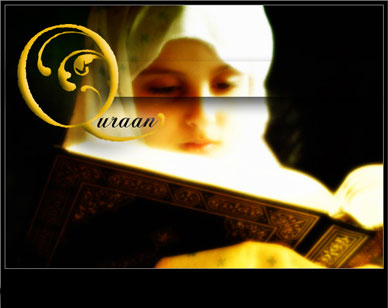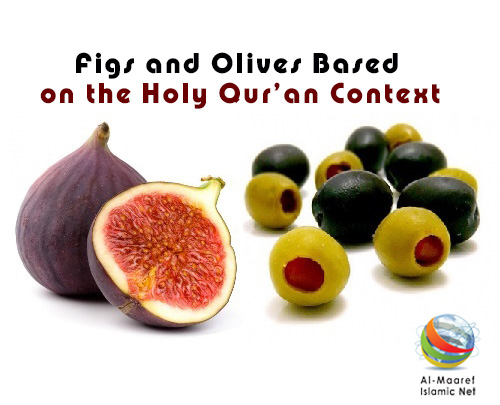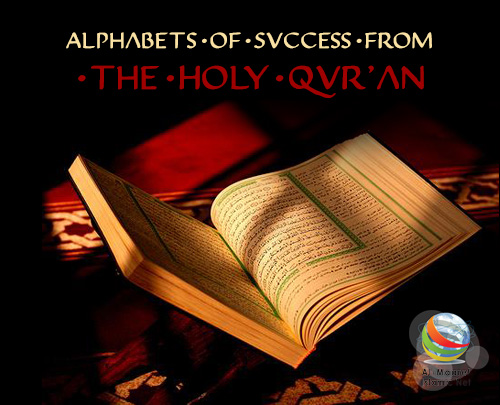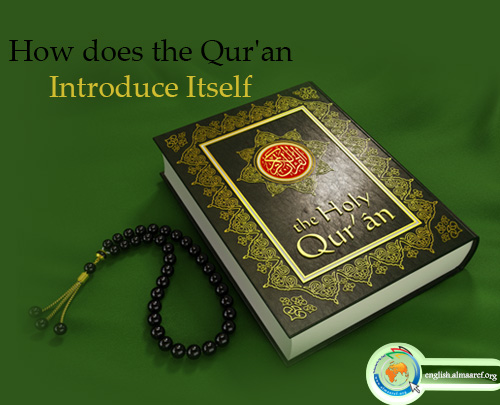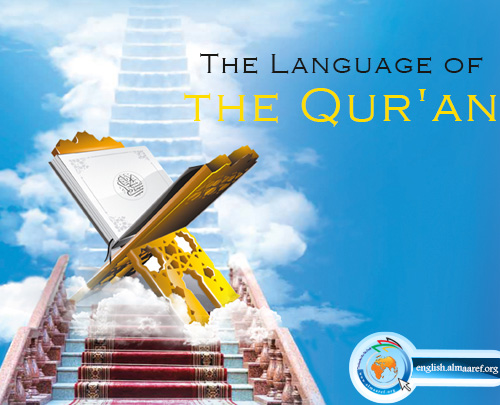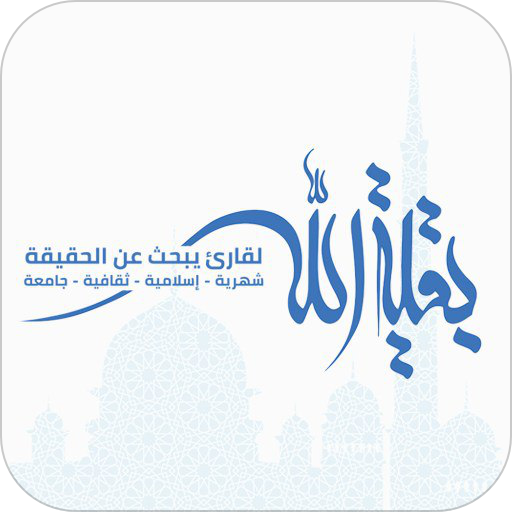The hadith concerning the "two weighty trusts" known as hadith al-thaqalayn is one of the most widely accepted and authoritative of all the traditions narrated from the Prophet, peace and blessings be upon him and his family, and it has also been recorded in the principal Sunni books of tradition. It possesses the highest degree of authenticity and acceptance. The text is as follows:
"I leave among you two precious and weighty trusts, one being the Book of God and the other my Progeny. These two legacies will never be separated from each other, and if you lay firm hold of them you will never go astray."1
Certain Sunni scholars even add the following sentence at the end of the hadith: "'Ali is always with the Qur'an and the Qur'an is with 'Ali; they too will not be separated from each other."2
Hadith scholars attribute the transmission of this tradition to roughly thirty Companions of the Prophet.3
According to numerous hadith scholars and historians, Shi'i and Sunni alike, the Prophet, peace and blessings be upon him and his family, never failed at different times in this life, including its difficult last moments, to draw people's attention to the profound link between these two great and authoritative sources of Islam, the Qur'an and his Progeny (Ahl al-Bayt), tracing out thereby an entire program for the future of Islam in a single instructive sentence. Small differences are to be seen in the form of the relevant traditions, some being detailed and others concise depending on the occasion, but the content and meaning are always the same: the profound and indissoluble link between the Qur'an and the Progeny of the Prophet, peace and blessings be upon him and his family, the absolute interrelatedness of the two.
Ibn Hajar, a Sunni scholar, writes:
"We have mentioned earlier different versions of this hadith. Some of them relate to the utterances made by the Prophet at Arafah in the course of his Farewell Pilgrimage; others to pronouncements made while he was on his deathbed in Madinah, surrounded by the Companions; another to his address at Ghadir Khumm; and yet another to statements made while returning from Ta'if."
He then adds: "None of these versions contradict each other, for there is no reason why he should not have repeated the same truth on all these occasions, and on others as well, given the great significance that both the Qur'an and his Progeny possess.4
In another tradition known as the hadith of the Truth (hadith al-haqq), the Prophet, peace and blessings be upon him and his family, says: "'Ali is with the truth and the truth is with 'Ali; wherever the truth is, 'Ali will incline to it."5
We know that the verses of the Noble Qur'an form a compendium of the divine commands and laws of Islam; the teaching contained in them are a guarantee for man's happiness and salvation. However, the interpretation and exegesis of the Qur'an have to be undertaken by persons who are acquainted with the language of revelation and who fully possess the necessary competence, in terms of both knowledge and conduct. The Shi'ah therefore believe that those who possess this competence must be identified by the Prophet himself and appointed by him to administer the affairs of the people and guide them. It is they who understand the language of revelation and can properly acquit themselves
of the task of interpreting and explicating God's verses. The juxtaposition of the Progeny of the Prophet with the Qur'an is thus due to the need of the Qur'an for an exegesis that will set forth its purposes and regulations.
If we look carefully at the content of the hadith, we will see that to separate the Qur'an from the Progeny of the Prophet and to follow the utterances and views of persons unacquainted with its symbols and truths is bound to lead to error and misguidance. The tradition therefore implies that only the Progeny of the Prophet can establish the firm and categorical meaning of the verses in God's Book that are allegorical.
The fact that the Prophet places the Qur'an and his Progeny side by side indicates that both are advancing in the same direction and toward the same goal: the Qur'an is a divine law and book, and the Progeny are its interpreters, executors and guardians. To separate and distance oneself from the Progeny is therefore to invite destruction.
The decline and deviance of the Muslims began when such a separation started to occur and men attempted to hold on to each one separately. The thesis, "God's Book alone is enough for us" came to prevail in their religious thinking, leading to the emergence of such schools as the Ash'ari and the Mu'tazilite. It was as if they knew the value of God's Book better than the Prophet himself and better comprehended its significance!
It is possible to understand the Qur'an and explain the knowledge it contains only by referring to the utterances of those persons upon whom knowledge has been directly bestowed by God, or at least whose knowledge is derived from instruction by a particular source. Such persons can be only the Inerrant (ma'sum) Imams of the Prophet's Progeny.
Ibn Hajar also cites the following sentence uttered by the Prophet, peace and blessings be upon him and his family:
"Do not attempt to go beyond these twin trusts (the Book and the Progeny of the Prophet), for that will lead you into perdition, and do not fall short in adhering to them, for that too will encompass your ruin. Do not imagine the People of the Prophet's House to be ignorant, for they are infinitely more knowledgeable than you and understand well the language of revelation."6
The Commander of the Faithful, 'Ali, peace be upon him, said:
"You will never remain faithful to your covenant with the Qur'an unless you recognize who it is that has betrayed his covenant, and you will never lay firm hold of the Qur'an unless you recognize who it is that has abandoned it. Seek the straight path of fidelity and the means of adhering to the Qur'an from the people of the Qur'an, for it is they who keep alive knowledge and learning and uproot ignorance. They it is by means of obedience to whom you become aware of the knowledge they hold. You comprehend their silence from their speech and their outer appearance from their inner state. They never rebel against the command of religion and never fall into dispute. Religion is a silent and veracious witness dwelling in their midst."7
What is meant here is that the Progeny of the Prophet are free from sin and pollution and even minor errors, for it is obvious that whatever is indissolubly linked to the Qur'an until both trusts are brought together before the Prophet, peace and blessings be upon him and his family, on the Day of Resurrection must be followed and obeyed by mankind together with the Qur'an itself. God cannot command men to obey one who is polluted by error and sin, nor can He create an indissoluble link between the Qur'an and such a person Only those who are utterly beyond the reach of impurity can be juxtaposed with the Qur'an, for those obedience to whose commands God has made incumbent on all
Muslims must be free of all defect.
Not content with his other utterances on the subject, the Prophet declared the number of successors (khulafa') who would come after him:
"This religion will endure until the Day of Judgement, for as long as twelve persons from Quraysh rule over you as my successors."8
"My successors will be twelve in number, just like the chieftains of the Bani Isra'il, all of them from Quraysh and (according to one version of this hadith) from Bani Hashim,"9
Abdullah relates the Prophet to have said: "As long as there are two men left on the earth, leadership will remain among the Quraysh."10
This mention of the twelve successors can refer only to the Inerrant Imams from the Progeny of the Prophet, peace be upon them, for neither were the first caliphs twelve in number, nor were the Umayyad and Abbasid rulers. More importantly, the crimes those rulers committed, far from assuring the welfare and happiness of the ummah, brought about the destruction of religion, so that it is impossible in any way to consider them the successors of the Prophet.
Those who could not deny the authenticity of the hadith concerning twelve successors but wished nonetheless to avoid recognizing the Twelve Imams of the Prophet's Progeny were obliged to offer tortuous explanations that were utterly irreconcilable with the text and content of the tradition, for the first caliphs and the Umayyad and Abbasid rulers when added together come to a total of some thirty people, so that the total number of claimants to the caliphate from among the Quraysh exceeds the number specified in the hadith. If we refuse to interpret the hadith as referring to the Imams of the Shi'ah, we are left with no clear or reliable meaning for it whatsoever.
Shaykh Sulayman al-Qunduzi, a Hanafi scholar, writes the following, in a vein free of all fanaticism:
"According to scholars, the traditions that specify the successors to the Prophet, peace and blessings be upon him and his family, to be twelve in number are well known and they have been narrated by different chains of transmission. It became clear with the passage of time that what the Messenger of God was referring to in this hadith were the twelve Imams from his Progeny. It is impossible to refer it to the first caliphs, for they were only four in number, nor can it be applied to the Umayyads, for they were more than twelve in number, apart from which with the exception of 'Umar b. Abd al-'Aziz they were all tyrants and oppressors, and they did not belong to the Bani Hashim, where as the Prophet had specified that his twelve successors would be from the Bani Hashim. Jabir b. Samarah mentions that the Prophet spoke this last part of the tradition softly, because not everyone was happy that the caliphate would go to the Bani Hashim.
"Equally, this hadith cannot apply to the 'Abbasids, because their number, too, is more than twelve; they did not act in accordance with the verse enjoining love for the family of the Prophet;11 and they ignored the hadith of the Cloak (hadith al-kisa'). The hadith must, then, refer exclusively to the Twelve Imams from the Progeny of the Prophet, for they were superior to all others with respect to knowledge, moral virtues, piety and lineage. They were a line who inherited their knowledge from the Messenger of God, peace and blessings be upon him and his family, their great ancestor. This is confirmed by the hadith concerning the two weighty trusts and numerous traditions that have reached
us from the Prophet."12
1- Muslim, al-Sahih, vol. 7, p. 122; al-Tirmidhi, Jami' al-Sahih, vol. 2, p. 308; al-Hakim, al- Mustadrak, vol. 3, p. 109. Ahmad b. Hanbal, al-Musnad, vol. 3, pp. 14-17. Ibn al-Sabbagh, Fusul al- Muhimmah, p. 24; al-Ganji, Kifayat al-Talib, p. 130; al-Qunduzi, Yanabi' al-Mawaddah, pp. 17-18; al-Ya'qubi, al-Tarikh, vol. 2, p. 92; Fakhr al-Din al-Razi, al-Tafsir al-Kabir, vol. 3, p. 18; al- Naysaburi, Ghara'ib al-Qur'an, vol. 1, p. 349.
2- Al-Qunduzi, Yanabi' al-Mawaddah, pp. 32-40; Ibn Hajar, al-Sawa'iq, p. 57; al-Irbidi, Kashf al- Ghummah, p.43.
3- Al-Halabi, al-Sirah, vol. 3, p. 308.
4- Ibn Hajar, al-Sawa'iq, p. 89.
4- Ibn Qutaybah, al-Imamah wa al-Siyasah, vol. 1, p. 68; al-Hamawini, Fara'id al-Simtayn, Chapter 37; al-Khatib al-Baghdadi, Tarikh Baghdad, vol. 4, p. 21; Fakhr al-Din al-Razi, Fusul al-Muhimmah.
6- Ibn Hajar, al-Sawa'iq, p. 153.
7- Al-Radi, Nahj al-Balaghah, Sermon 145.
8- Muslim, al-Sahih, vol. 13, p. 202.
9- Muslim, al-Sahih, vol. 6, p. 2; al-Bukhari, al-Sahih ., Chapter 15 of "Kita'b al-Ahkam". Ahmad b. Hanbal, al-Musnad, vol. 1, p. 397, vol. 5, p.86; Ibn Kathir, al-Bidayah, vol. 6, p.245; al- Qunduzi, Yanabi' al-Mawaddah, p. 373.
10- Muslim, al-Sahih, vol. 13, p. 202.
11- That is 42:23.
12- Al-Qunduzi, Yanabi' al-Mawaddah, p.446.


